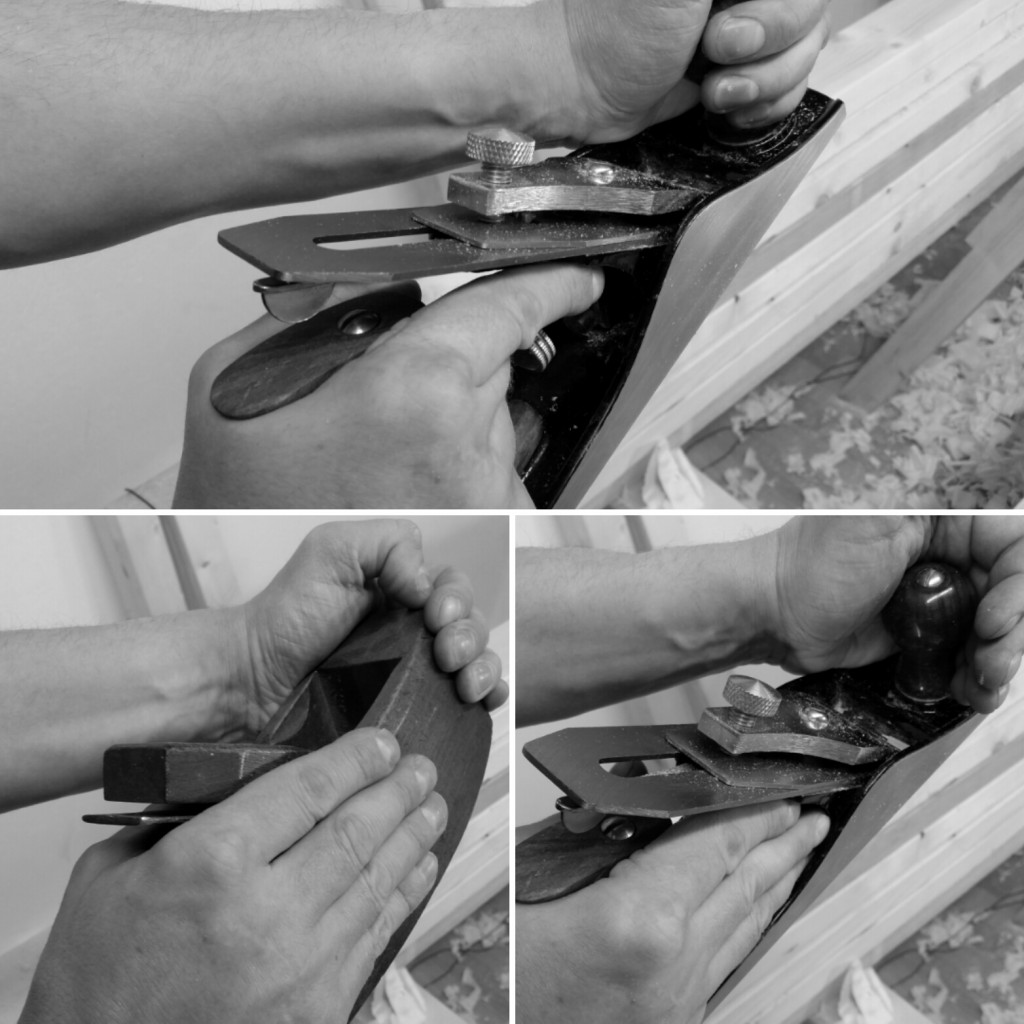We may receive a commission when you use our affiliate links. However, this does not impact our recommendations.
Woodworking forums can be helpful, no really they can. It’s thanks to a forum that I read a discussion between George Wilson and Zach Dillinger (really looking forward to Zach’s book towards the end of this year). They were discussing the size of plane totes from early wooden planes and why they were smaller than the typical “Bailey” style tote we are all familiar with. The reason put forward was that with planing done in such volume in pre-industrial times, it was essential to the long term health of the woodworker to push the tote with an open hand with the web area between fore finger and thumb providing the grip.
If totes were bigger or “normal” on early planes it would’ve made it more likely the person planing would exert too much gripping pressure leading to issues similar to carpal tunnel syndrome. Although very few of us will ever approach the volume of planing those early woodworkers did, being open to the reasons why they used their tools a certain way can prove useful. After all they were doing more with their planes than just removing snipe or a few mill marks.
I’m well into my workbench build now and I’m using very accessible but also very roughly finished construction grade timber. I’m dressing the surfaces and there is much to be done. Holding the budget #4 I’m using with an open hand, in a similar way to a wooden plane, has proven very comfortable. You can see my experience with this below.
If you find yourself with discomfort during planing consider taking a cue from the early masters or even consider visiting a woodworking forum.
Here are some supplies and tools we find essential in our everyday work around the shop. We may receive a commission from sales referred by our links; however, we have carefully selected these products for their usefulness and quality.











Okay, so now I have a good reason to get my coffin smooth refurbished with a new sole and give it a try.
Thanks, Graham…I wish I’d had your tip before I began the flattening process on my oak workbench top. (It was a former butcher block table in a public reception area. I sistered a lot of the material to double the thickness and give it some mass). Countless 5-gallon drywall mud buckets were filled with shavings, mostly using a 1940’s vintage Stanley 7C. Alas, the piece had a ~1/8″ crest in the middle…which over 6′ of length equals a surprising amount of wood. Although ostensibly a blue collar worker, my hands became a blistered and raw mess. If ever I tackle such a beast again, I promise to try changing my grip….and maybe wearing padded work gloves. It might be time to reread The Joiner and Cabinet Maker to see what was said about the thicknessing process in the 1830s. Best wishes, Peter
I was going to mention…nevermind 😉
relaxation of the hands can solve so many issues in woodworking its not even funny.
I solved many issues when I first started out by forcing myself to relax my hands. I keep a loose grip on the rear tote, saw, mallet, etc.. with my right hand. While planning I try and hold the front knob with just a few fingers and not with the palm of my hand. Many times I do change over to the coffin smoother style of grip. May also be the reason why I use more and more wooden planes these days.
As a percussionist for years I developed issues with my hands, not carpal tunnel syn, but cramps and stiffness in the hands and wrists. Creeping tension in the hand.
I try and focus on holding all my tools as if they were a little bird, which is how I was instructed to hold mallets and sticks when I was a percussionist in college. It helps a lot.
I also stretch my wrists and hands before , during , and after long work days. This also gives me time to relax my eyes and brain, two other things that don’t function well under stress.
When I first picked up a coffin style smoothing plane I liked the different grip, sort of cupping both hands around the front and back of the plane. It is very comfortable (relatively). With the bailey style planes I still keep the pistol grip around the tote, but I’ve been cupping the knob in the same way I would with the coffin plane, and that grip seems a bit more relaxed.